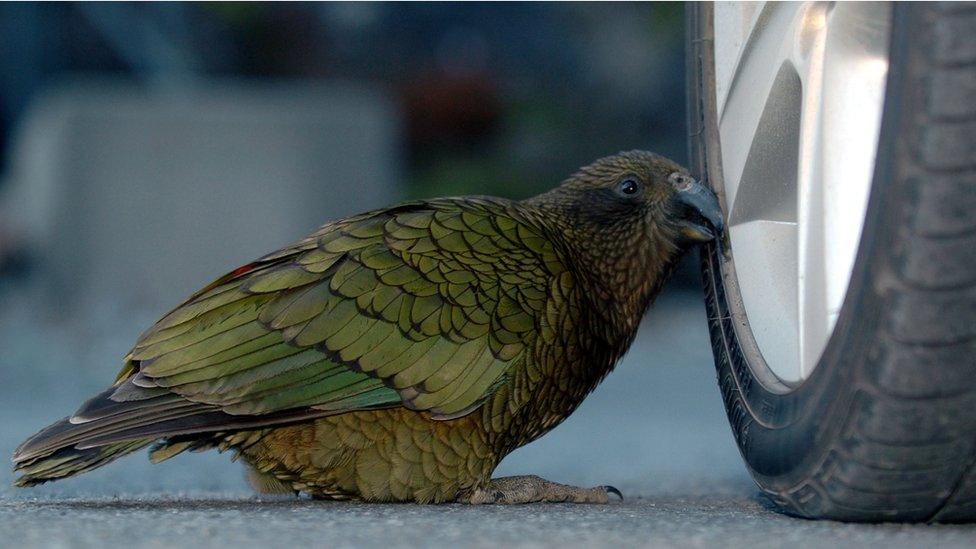Concern over falling kea numbers in New Zealand
- Published

The birds have strong beaks and enjoy testing them out on people's property, often to destructive effect
Conservationists in New Zealand are sounding the alarm over a drop in the number of the famously inquisitive kea bird.
There are thought to be between 1,000 and 5,000 of the alpine parrots left in New Zealand, and the Kea Conservation Trust says it's seen a fall in the population in the South Island's Hawdon Valley in recent years. "When you go up into the mountains, the numbers are really concerning," volunteer Mark Brabyn tells Stuff.co.nz, external. "We don't want to wait until there is only a couple of hundred left to do something."
Kea are known for their trusting nature around humans, often approaching passers by and happily gobbling up junk food. But that's part of the problem. Gorging on ice cream and chips, external left over by hikers - or sometimes fed directly to the birds - can end up killing them. Stoats are another major threat, destroying all six kea nests in the area last year with no chicks surviving, Mr Brabyn says.
The government has previously admitted, external that the controversial poison 1080, which is dropped from the air to kill predators, is also responsible for killing some kea. Studies are being carried out to determine whether the poison is an overall help or hindrance, external to the birds.
The Kea Conservation Trust is now trying to crowdfund, external a mobile app to track kea with the public's help. Anyone who encounters a tagged bird would be able to input its tag number to learn more about that individual, log its location, condition and behaviour, and even upload photos. "It would give us such valuable information about numbers and how far they were travelling, and would raise awareness about the bird. People would be connecting and caring," Mr Brabyn says.
As far as predators go, New Zealand's government wants to rid the whole country of stoats, rats and possums by 2050, saying these non-native animals kill 25 million native birds each year. But the kea's inquisitive nature can make even well-meaning pest control efforts difficult.
In February, seven of the birds died after breaking into stoat traps, external to get at the egg and meat bait inside, prompting the Department of Conservation to modify 700 traps to make them kea-proof. Current research into traps involves stoat anal glands, which presumably won't attract curious birds.
Next story: North Korean TV finds its funny bone with comedy show
Use #NewsfromElsewhere to stay up-to-date with our reports via Twitter, external.